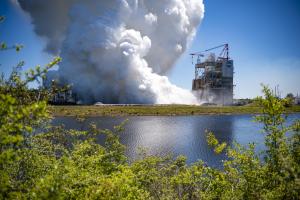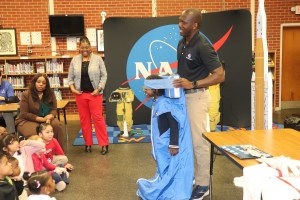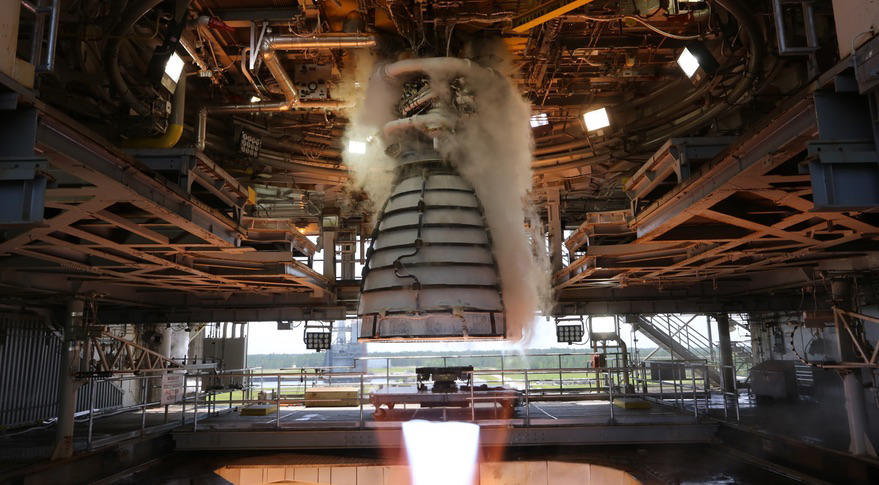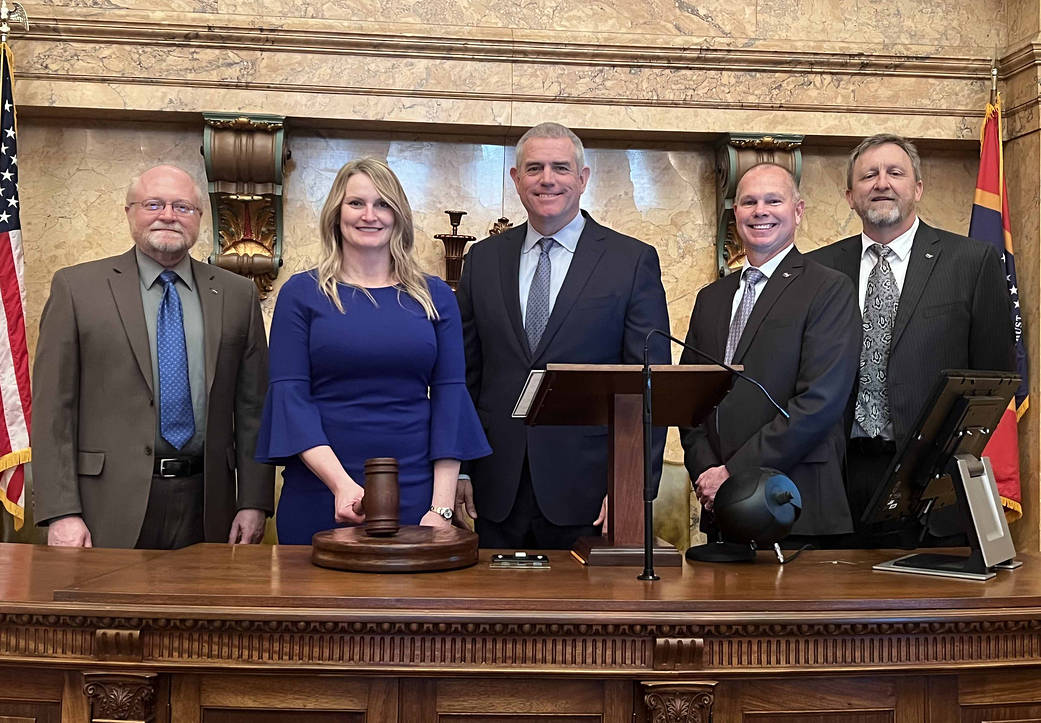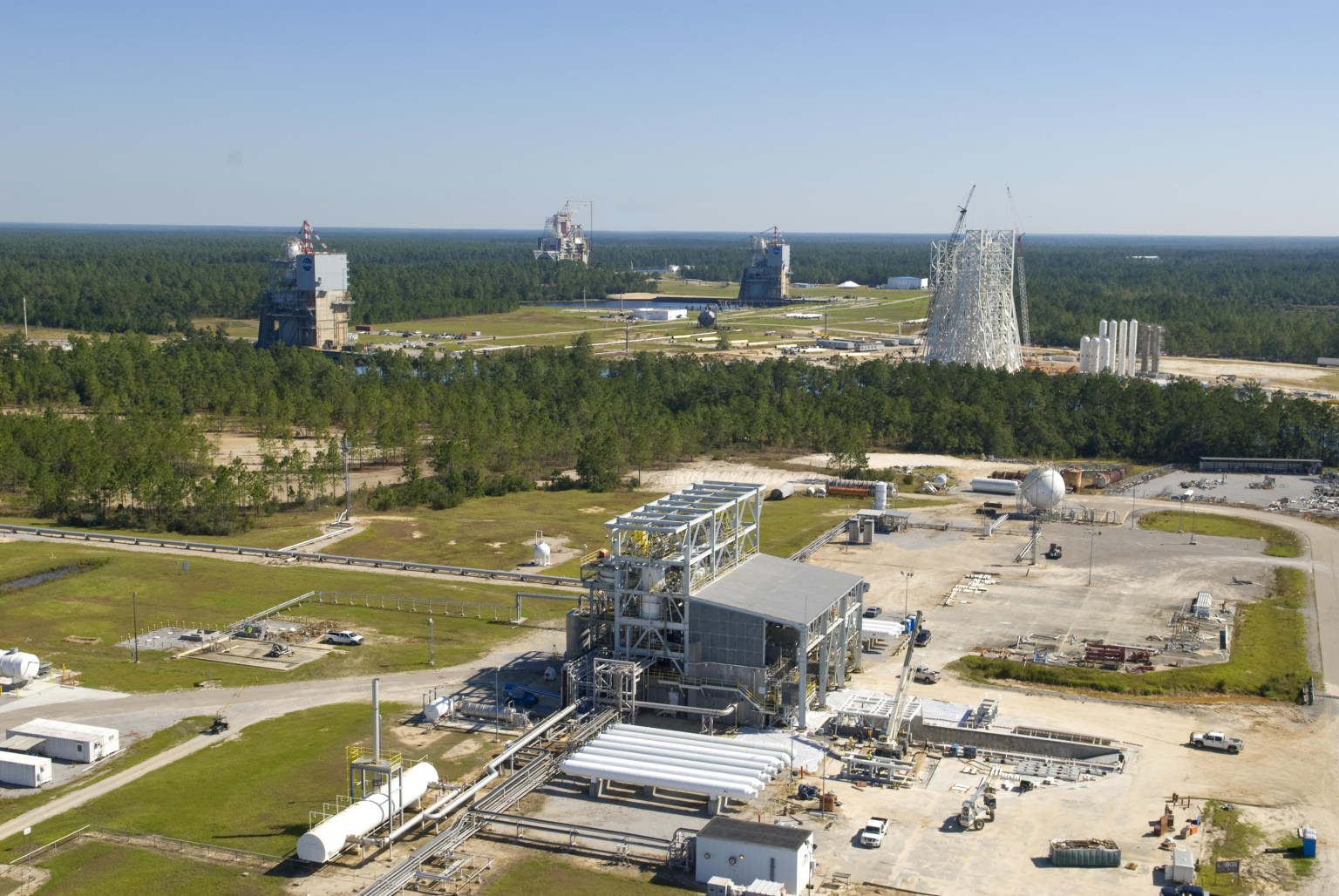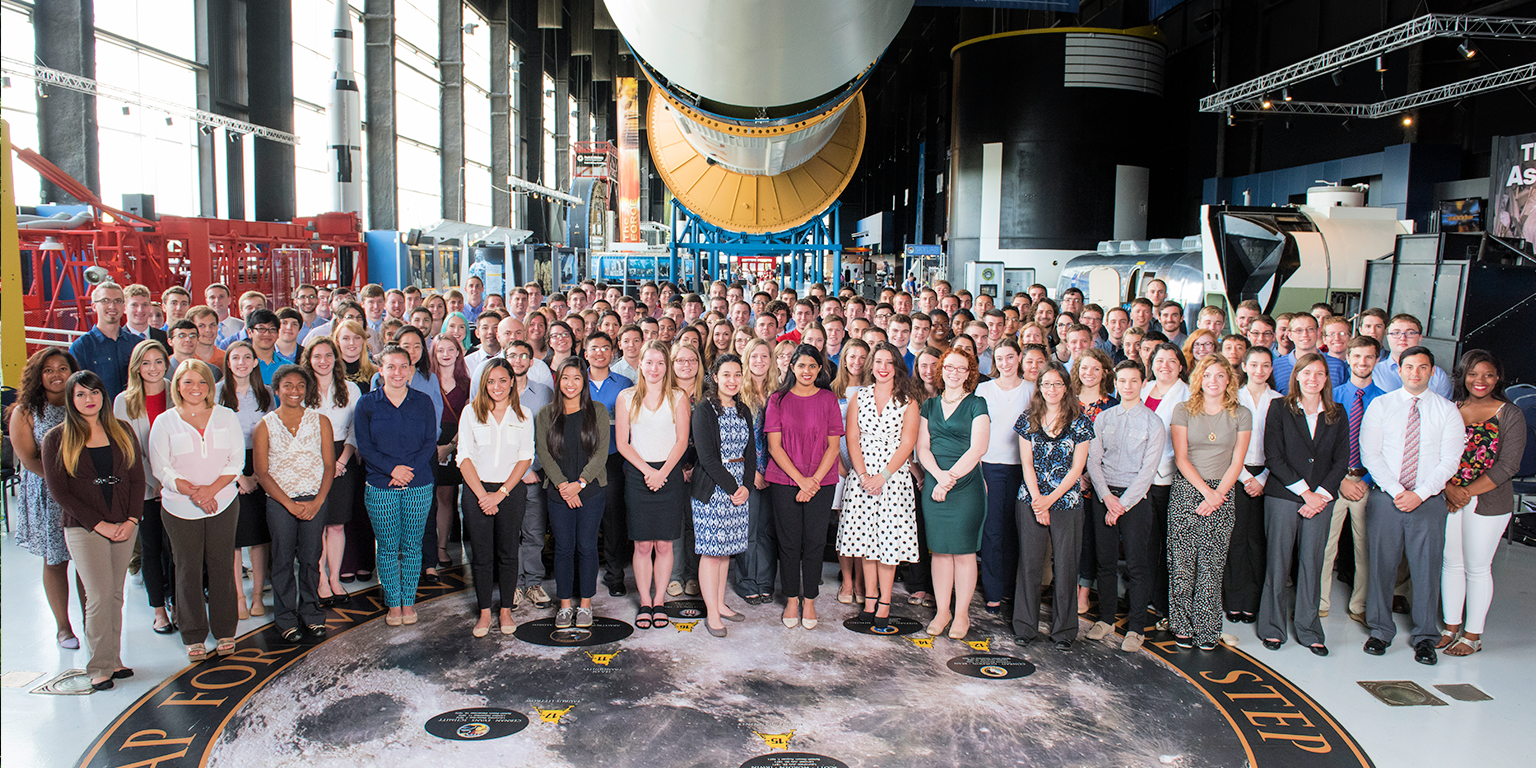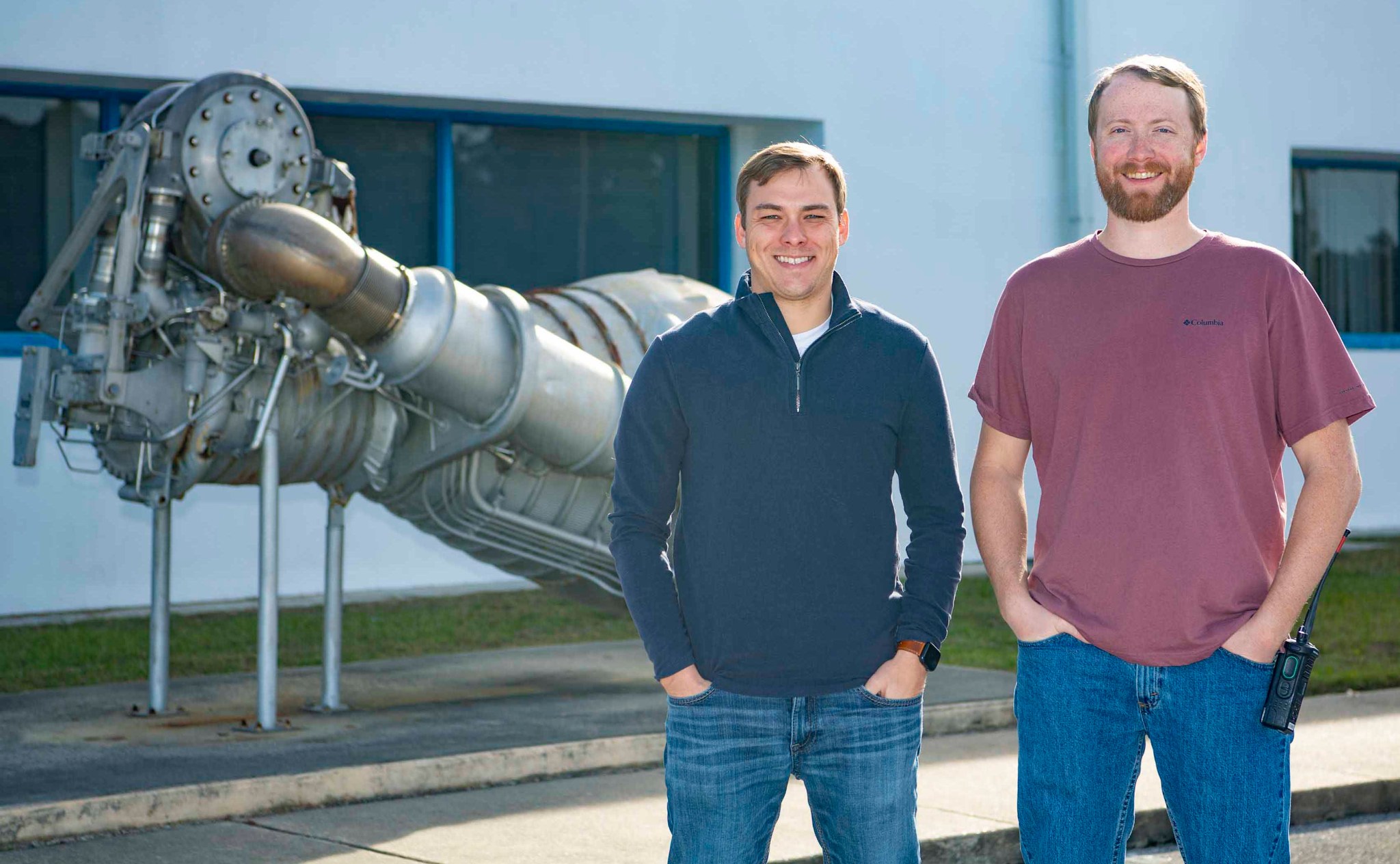
The last Wednesday in November proved to be a full-circle moment for two engineers at NASA’s Stennis Space Center near Bay St. Louis, Mississippi.
Josh Greiner heard a familiar voice on the headset as he prepared to conduct an RS-25 engine test on the Fred Haise Test Stand on Nov. 29. It was Peyton Pinson, speaking from the same nearby test complex building where he and Greiner once shared a cubicle as interns seven years earlier.
As Greiner listened in, Pinson announced he would conduct a hot fire on the E-1 Test Stand for commercial company Launcher Space in 30 minutes.
“It was a pretty cool moment,” Greiner said. “We used to sit there and look at the test conductor kind of in awe and were amazed they could keep up with all these different console operators at the same time. Now, we both are part of the test team and both part of the rotation that gets to conduct tests.”
Pinson and Greiner arrived at NASA Stennis in May 2016 to participate in the NASA Pathways work study (co-op) program. Pinson was a mechanical engineering major at Mississippi State University in Starkville. Greiner, still unsure of what direction he wanted to go in the field, was majoring in aerospace engineering at the University of Alabama in Tuscaloosa. He ultimately finished with a mechanical engineering degree and credits his work study experience for providing clarity for his future.
“If you can get a co-op, I’m 100 percent in favor of that,” Greiner said. “You get exposure to a breadth of disciplines that make it a lot easier to start narrowing in what you really want to do. In college, we all come out with a pretty standardized foundation of engineering that’s an incredible knowledge base, but you really learn a lot with on-the-job training. Getting to the right place with the right people is going to help your growth more so than getting the perfect engineering degree.”
The right place proved to be NASA Stennis. Pinson and Greiner spent multiple semesters soaking up knowledge from the experienced, diverse workforce at the south Mississippi NASA center. They rotated throughout the center complex where teams fulfill NASA and commercial space company test needs.
“When we started as co-ops, Josh and I were given a good bit of responsibility and trusted with a lot,” Pinson said. “We had so many people who were a part of the team that really wanted to help us learn and develop and get to where we are now.”
After completing the work-study program and earning their degrees, Pinson and Greiner were hired by NASA in 2018.
“Our management put us in a position to be successful,” Greiner said. “We started running consoles as co-ops, and they helped move us onto the test stands with projects that had a lot going on and gave us a huge share of responsibility in leading projects early in our career.”
Both now have years of experience that includes conducting various engine tests, such as the successful Nov. 29 hot fires at the nation’s premier rocket engine test site.
“We all work together in the mechanical operations group to get to that point,” Pinson said. “There’s a lot of opportunity for a new mechanical operations engineer to learn along the way and to sit in the test conductor seat with an experienced test conductor to back you up and guide you through it. Eventually, you have enough on-the-job training to run it yourself.”
For information about the NASA Pathways program, visit:



























